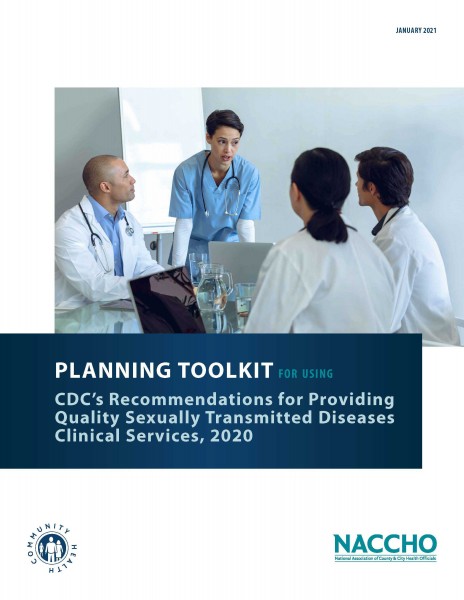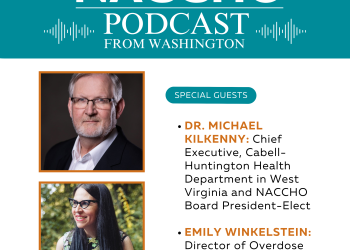FOR IMMEDIATE RELEASE
Contact:
Adriane Casalotti
Chief, Government and Public Affairs
[email protected]
New Toolkit Aims to Strengthen Sexually Transmitted Disease Services at Local Health Departments
Washington, DC, January 29, 2021 — The National Association of County and City Health Officials (NACCHO), the voice of the country’s nearly 3,000 local health departments, is pleased to release a new collection of tools to assist health departments in assessing the quality of their sexually transmitted disease (STD) services.
NACCHO’s planning toolkit and related tools aims to assist health departments in operationalizing Recommendations for Quality STD Clinical Services, 2020, released last year by the Centers for Disease Control and Prevention (CDC). Using the assessment tool, health departments can determine the extent to which their STD service provision aligns with the national recommendations and use the planning toolkit to determine prioritize key services that should be added.
This is particularly important as the coronavirus pandemic has wreaked havoc on STI prevention and care across the United States leading STI clinics to be closed or operate at limited capacity, while partner notification is being conducted virtually and mobile outreach for testing is significantly limited. Additionally, staff have been redirected to the COVID-19 response that continues to significantly challenge the capacity of local health department STD programs.
Preliminary data for 2019 indicates that rates have increased for reportable sexually transmitted infections (STIs) for the sixth straight year. According to 2014 research data, congenital syphilis has increased drastically over the last decade. Disparities persist in rates of STIs among racial minority and Hispanic groups when compared to whites. Race and
ethnicity in the United States are population characteristics that strongly correlate with other factors affecting overall health status, such as income, employment, insurance coverage, and educational attainment.
According to Centers for Disease Control and Prevention (CDC) 2018 STD surveillance data, the rate of reported chlamydia cases among Black females was five times the rate among white females and 6.8 times higher in Black males compared to whites. For American Indians/Alaska Natives (AI/AN), it was 3.7 times the rate among whites and for Hispanics, it was 1.9 times the rate among whites.
In the case of gonorrhea, the overall rate among Blacks was 7.7 times higher than among whites. It was 4.6 times higher in AI/AN and 1.6 times the rate in Hispanics as compared to whites.
Similar trends can be seen with syphilis where Blacks have 4.7 times the rate, Hispanics 2.2 times, and AI/AN 2.6 times all as compared to whites. The same pattern is seen in congenital syphilis (transmission between pregnant person and fetus). During 2014-2018, rates of reported congenital syphilis cases increased for all race/ethnicity groups but the rate among Blacks was 6.4 times the rate among whites as well as 5.9 times in AI/AN and 3.3 times in Hispanics as compared to whites.
As the federal government releases its first ever STI Federal Action Plan, NACCHO is committed to supporting local health departments with the tools and resources such as these that they need to implement the Plan and combat historic rates of STIs.



